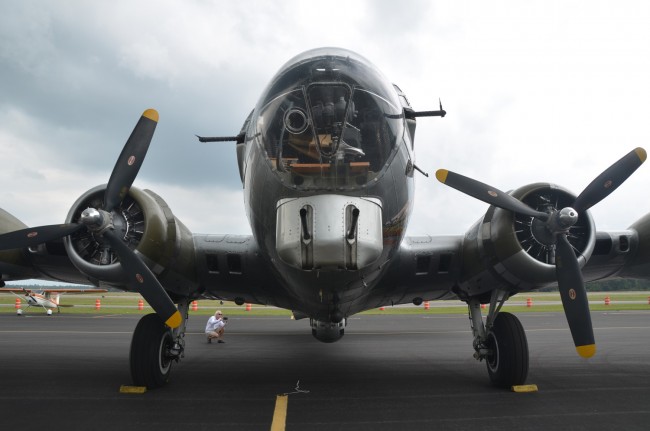
Walter Moore was last on a B-17 when he was on his 31st mission exactly 70 years and nine days ago. On March 17, 1945, he was shot down over Germany and taken prisoner. Around 2:30 this afternoon, the 91-year-old Palm Coast resident climbed aboard a B-17 again for the first time since that day.
He was smiling. He had reason to. He had survived despite having to bail out of a Flying Fortess as its engine was on fire. “That was about eight minutes from the Russian lines where we were giving them tactical support,” he said. “The number two engine was on fire,” he said, apparently from flack fire. “We all got out of the plane and made safe parachute jumps, my first parachute jump, by the way.” He was about 20 or 21. All nine crew members survived, though today Moore is the last surviving airman from that crew.
The B-17 he’d climbed aboard is the Aluminum Overcast, as it’s called, a Flying Fortress built in 1945 that never saw combat and that sold as surplus for $750 at the end of the war and was used as a crop duster in Alabama, a cattle-hauler and a mosquito-control sprayer before it was donated to the non-profit Experimental Aircraft Association, which has been touring it for 20 years from its home base in Oshkosh, Wis. The B-17 landed at Flagler County Airport at 1:02 p.m. Thursday to be part of the three-day Wings Over Flagler Rockin the Runways, starting Friday. It’s offering flying tours at $450 apiece. for those unable to afford the price, and are lucky to survey it or, better yet, see it from the inside, they might understand why Henry Arnold, who commanded the Air Force during World War II, called the plane “the guts and the backbone of our world-wide aerial offensive.”
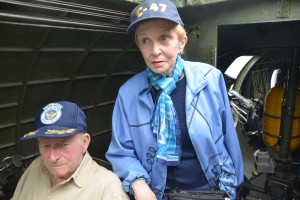
Moore was part of the daylight raids that the American air force carried out relentlessly against Germany, taking off East Anglia and Surrey in England for the 12-hour flight out and back. The Royal Air Force carried out night raids, thus providing 24-hour rolling bombings of Germany, which led directly to the defeat of the Axis power.
“It was about 11 or 12 hours, the tiredest I have ever been for me, anxiety and everything going on,” Moore said of his first flight. “You get used to it, you know, you’re not afraid or anything, it’s just part of life. You’re going to do it and you don’t worry about the consequences.”
And what consequences. Precisely 12,731 Flying Fortresses were built by a combined consortium of Boeing, which designed it, Douglas and Lockheed. It usually carried only 2 tons of bombs, yet B-17 raids dropped 571,460 tons of bombs on European targets, a third of the total dropped. Some 250,000 Americans flew the B-17 during the war, of whom 46,500 were either killed or wounded. About 5,000 of the B-17s were shot down, with losses at times equaling the number of plans being produced each day: 17.
The plane would cruise at 30,000 feet. It was not pressurized. Temperatures would drop to minus 20 or minus 30. The crew of 10 would have to stay warm with electrically warmed jackets and breathe oxygen from masks. There’d be malfunctions. There’d be discomfort and fear and difficulties contending with the simplest bodily needs, down to having to pee in condoms, which wasn’t a problem the moment the condoms froze, but could be quite a problem if the condoms burst. And there were the bombings, many of them devastating to civilians below, including, for example, the firebombing of Dresden that killed around 25,000 people in three days. That was the bombing Kurt Vonnegut, the American novelist, experienced from below, where he was being held prisoner, and that led to “Slaughterhouse Five,” one of the great anti-war novels in American literature.
“No warplane that hung a vapor trail in the sky or blasted an enemy with its fire ever claimed so many loyal and devoted supporters among Allied airmen and civilians nor so many implacable foes among Axis fliers and citizens,” reads a 1947 New York Times editorial about the B-17. “And there is no question that the hardy old Fort honestly earned both the devotion and the hatred she received.”
Florida has a special place in the history of the B-17, as Rex Gray, who piloted the plane into Flagler airport with Ken Morris, said today.
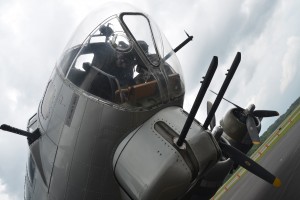
As it turned out, the RAF’s B-17 raids were not successful. The RAF—and the US Air Force—realized that to call the B-17 a Flying Fortress was a misnomer: the plane was too vulnerable. But it spurred the American military to redesign the plane and the way it flew them, in large numbers and in “box formation,” creating a fortress-like group of planes that had a devastating effect on the Luftwaffe, the German air force.
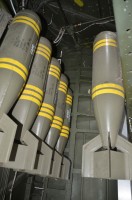
To Gray, 66, and Morris, 60, interactions with veterans can sometimes be overwhelming, even as they remember those encounters now.
“The honor of doing it, seeing those guys, those stories I have, that makes it all worthwhile for me,” says Morris, whose wife is also a pilot for the B-17, but not on this trip. “I mean it’s a kick, those of us in the flying community, when I can say, yeah, I get to fly a B-17, that’s pretty cool, but that coolness wore off really pretty fast, because it can be a lot of work. But it’s those guys that come out in the wheelchairs now, and we’re losing them very quickly, they’re dying very, very quickly. I do regret that I do regret in the program three or four years before I did, because now they’re all in their 90s.”
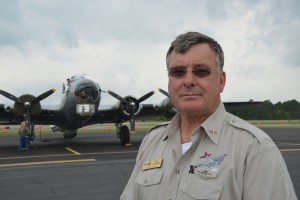
Gray describes a similar experience from a different angle.
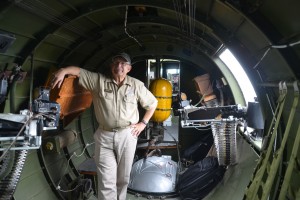
Walter Moore of course was one of those guys as he walked through the plane Thursday afternoon, though he was not the only living history walking the plane. With him was a friend, Georgette Joubert, one of the pioneering women of the Royal Canadian Air Force. She was in the air force in 1953-55, and survived her own plane crash when a DC-3 spiraled into a marsh ion Ontario. It was a night training mission. One of the engines was lost. “I got scared only an hour later when the helicopter came in,” Joubert said, “the old helicopter with the basket. I told the captain, you go first. He said no, ladies first.” She went. “I don’t know why I survived,” she says. She had to stop flying when a sound-barrier incident damaged her era.
Joubert, 81, has been in Palm Coast for 24 years. And she still loves planes.
Wings Over Flagler Rockin the Runways hours are from 4 to 9 p.m. Friday, 10 a.m. to 9 p.m. Saturday, and from 10 a.m. to 2 p.m. Sunday concluding with a massive fly-off. Parking and shuttle service is free, and $5 airport parking is offered. Many education charities benefit from the event. Admission is just $12 adults, veterans $10 and kids 12 and under $5. No pets or coolers. Bring concert chairs. For more aircraft information go to WingsOverFlagler.com.
![]()
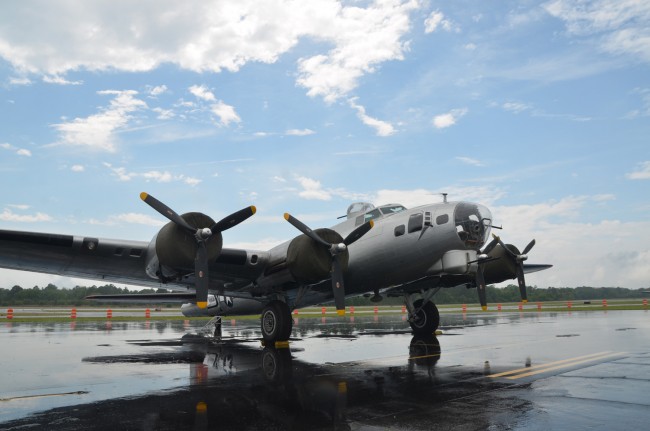





























David S. says
What a beautiful aircraft god bless those vets who flew them,may I add that while I lived in Myrtle beach SC I saw 2 Stealth fighters fly into the MBAFB they were amazing and as I can recall they can take off from a standing position I think they still use them today maybe anyone could answer this for me.
Will (#1) says
The B-17 and the Ford Tri-Motor flew over the neighborhood a little while ago. Thrilling!